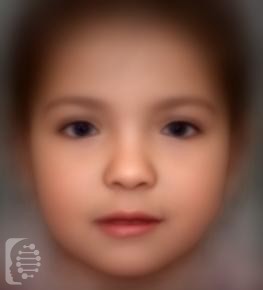What is Waardenburg syndrome?
Waardenburg is a group of rare genetic disorders that occurs in around 1 in every 40,000 births.
The syndrome is made up of four genetic disorders, named Type 1-4. Type 1 and 2 are the most common, while type 3 usually causes the most severe symptoms.
Auditory and pigmentary (relating to the skin) abnormalities are the main characteristics of the syndrome. However symptoms of this rare disease may vary considerably between individuals.
What gene change causes Waardenburg syndrome?
Mutations in six genes, including the SOX10, EDN3, EDNRB, KITLG, WS2C, MITF, and WS2B genes, cause the syndrome. Through time, some types have disappeared and/or fusion with others.
The disease is an inheritable condition. Types 1, 2A, 2B, 2E, and 4C are inherited in an autosomal dominant pattern. Types 3, 4A, and 4B may be inherited in either an autosomal dominant or recessive pattern. Type 2F is inherited in an autosomal recessive pattern.
In the case of autosomal dominant inheritance just one parent is the carrier of the gene mutation, and they have a 50% chance of passing it onto each of their children. Syndromes inherited in an autosomal dominant inheritance are caused by just one copy of the gene mutation.
Autosomal recessive inheritance means an affected individual receives one copy of a mutated gene from each of their parents, giving them two copies of a mutated gene. Parents, who carry only one copy of the gene mutation will not generally show any symptoms, but have a 25% chance of passing the copies of the gene mutations onto each of their children.
What are the main symptoms of Waardenburg syndrome?
The main symptoms of the syndrome may vary in their severity between individuals and according to the type of the condition developed.
Hearing loss, and changes to the color of the eyes, skin, hair, and shape of the face are common symptoms between individuals with the syndrome. These changes may include spots in the eyes and premature greying of hair.
Other potential physical characteristics of the syndrome include problems with producing tears, a small colon, an abnormally shaped uterus, a cleft palate, partial albino skin, white eyelashes or eyebrows, a wide nose, and a unibrow.
Possible clinical traits/features:
Aganglionic megacolon, Blue irides, Heterogeneous, White forelock, Premature graying of hair, White eyebrow, White eyelashes, Autosomal dominant inheritance, Autosomal recessive inheritance, Sensorineural hearing impairment, Hypopigmented skin patches, Heterochromia iridis
How is it diagnosed?
To find out if someone has a diagnosis of Waardenburg syndrome, it is important to have a consultation and evaluation with a clinical genetic specialist. Specialists may also suggest specific genetic testing or other types of tests to help reach a diagnosis. FDNA’s AI technology can help speed up the diagnostic process by analyzing facial features and other health information.

